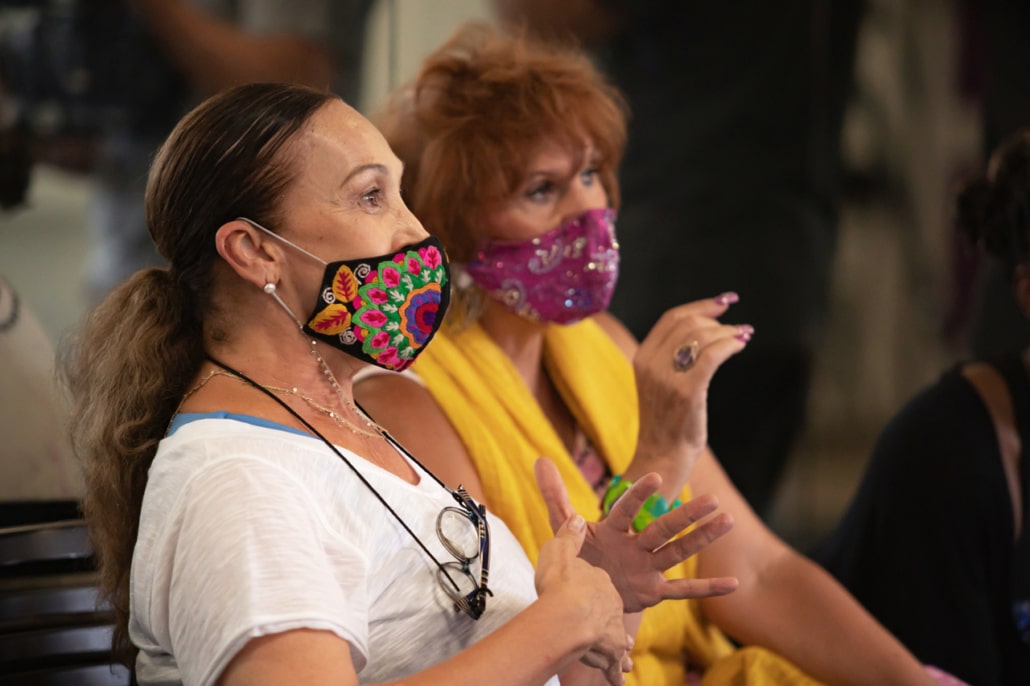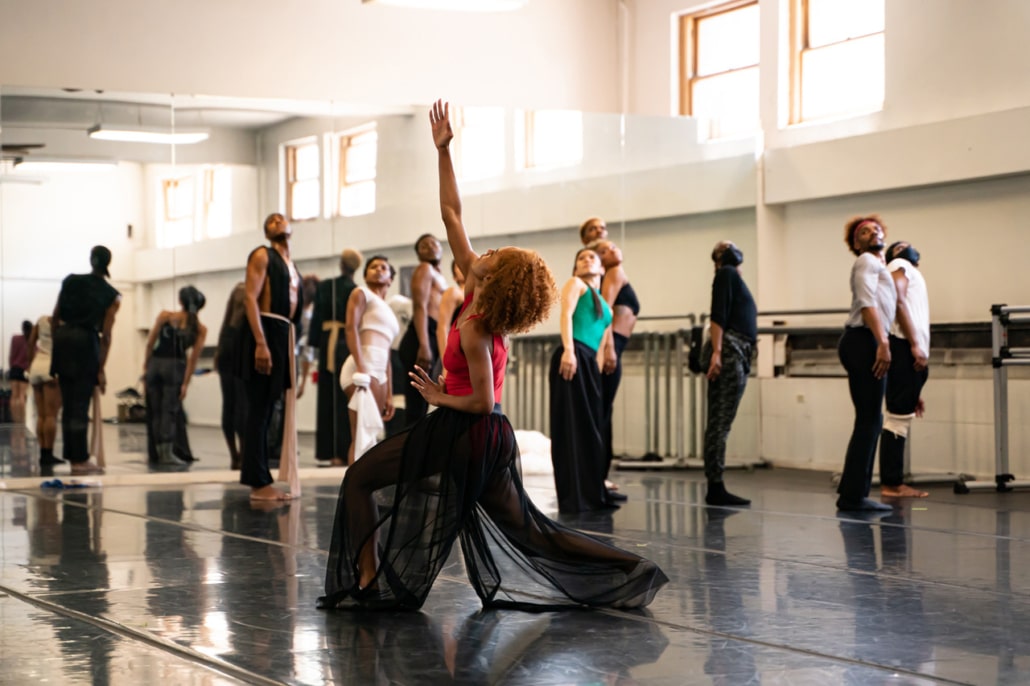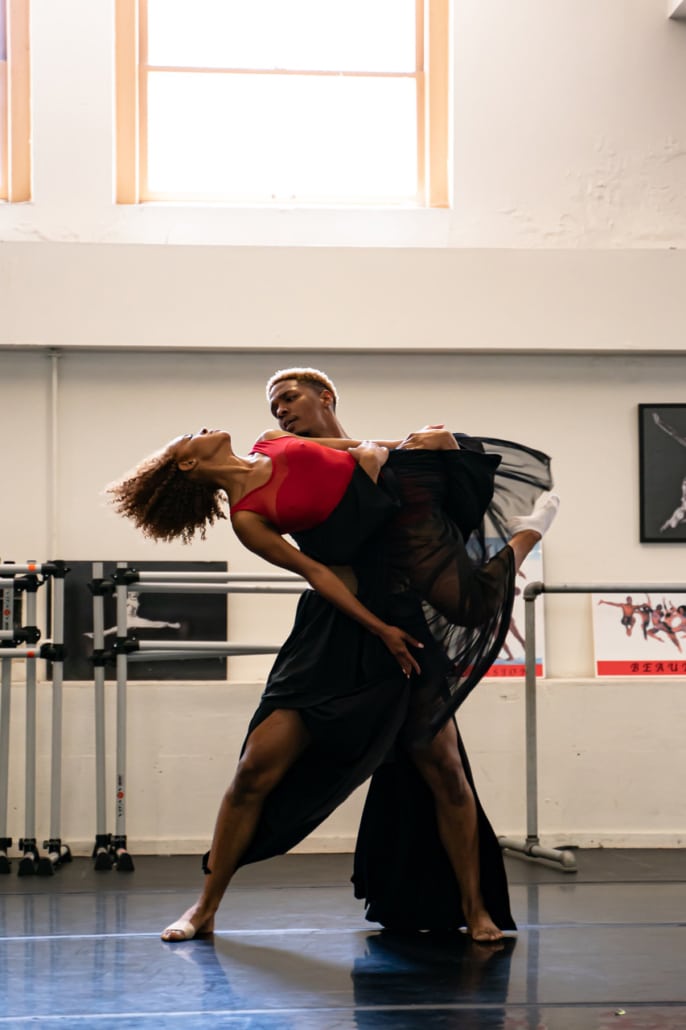DCPA NEWS CENTER
Enjoy the best stories and perspectives from the theatre world today.
Enjoy the best stories and perspectives from the theatre world today.
Depicting the confluence of Indigenous, European, African and Asian cultures focused on Mexican folk icon Catarina de San Juan’s global journey from India to 17th-century Mexico
By Patricia Smith
The Four Journeys is a new ballet conceived by Maestra Amalia Viviana Basanta Hernandez, Artistic Director of Ballet Folklorico de Mexico, that examines the confluence of culture in Mexico from its diverse Indigenous heritage to the historic influences of European, African and Asian infusions.

Two modern dance icons. (l-r) Maestra Amalia Viviana Basanta Hernández with Cleo Parker Robinson. Photo by Martha Wirth.
This piece does not stop at the overlooked African third root—the Mexican census only began officially recognizing Black people a few years ago despite their presence for more than 400 years in Mexico resulting from the slave trade—and presses on to also embrace a hardly discussed fourth root, the Asian presence. The Four Journeys is a work that confronts deeply held convictions on cultural appropriation while being grounded in a celebrated folk-dance tradition that has effectively challenged convention along the way. Hernandez lives this work.
The Four Journeys centers around the character of Mexican folk icon Catarina de San Juan (birth ca.1607/place unknown; death January 5, 1688, Puebla, Mexico). Known as the China Poblana, she was an Asian slave who, according to legend, belonged to a noble family from India. Kidnapped, she was enslaved and later married in Mexico.

Ensemble soloist Samiyah Lynnice portrays Caterina de San Juan in The Four Journeys with the members of the CPRDE. Photo by Marth Wirth.
From India to Mexico she crossed the globe through the Spanish East Indies (Philippines) and has been credited since the Porfiriato as the inspiration for the China Poblana dress. After converting to Catholicism in Cochin, (Kochi/now known as Kerala in India) where she was kidnapped by Portuguese pirates, Mirra was given the Christian name Catarina de San Juan, the name she was known as in Angelópolis where she worked as a slave, married, and eventually became a beata (a religious woman who took personal religious vows without entering a convent).
Upon her death, Catarina de San Juan was buried in the sacristy of the Jesuit Templo de la Compañía de Jesús in Puebla, in what is popularly known as Tumba de la China Poblana.
Half of the story has yet been told from an era of Indigenous martyrs, Asian slaves, Black conquistadors, European pirates—these are journeys with so many twists and bends that international teams of researchers must be summoned to untangle and tease apart the genomes to pinpoint their origins.

CPRD Ensemble members Corey Boatner and Samiyah Lynnice rehearse a duet from The Four Journeys in which Lynnice portrays Caterina de San Juan. Photo by Marth Wirth
By use of both folkloric and contemporary movement vocabularies, regional music soundscapes and a futuristic projection design by Taketo Kobayashi, audiences will journey through myth, legend, and a heightened historic perspective, past the stereotypical into a more nuanced understanding and appreciation of the legacy and impact of Mexico’s artistic, spiritual, social, and civic traditions. The Four Journeys will traverse Mexico from its Caribbean gulf to the Pacific.
Sra. Basanta has captured the rich history and essence of Mexico, past and present, with a vocabulary of movement that speaks to a sophisticated and international audience.
The full ballet is scheduled for its world premiere September 25 and 26, 2021 at The Ellie Caulkins Opera House, Denver.
The Four Journeys ticket sales for general seating open August 6.
DETAILS
The Four Journeys presented by Cleo Parker Robinson Dance
Ellie Caulkins Opera House
Sep 25 & 26, 2021
Tickets go on sale Aug 6.
